This post contains one or more references to our advertisers. If you buy something through our links, we may earn a commission. For our full advertising policy, click here.
Egypt is a traveler’s dream.
Its staggering monuments to millennia past conjure childlike awe in everyone who visits, from the colossal pyramids to intricate royal tombs in the Valley of the Kings. There’s too much to squeeze into a single trip here, but with the proper preparation, your Egypt itinerary can flourish into the adventure of a lifetime.
There are many different ways to experience Egypt. The default is to book a tour based on your desired length and budget requirements. Your chosen company will handle everything, from transport to hotels to guides. But if you value the flexibility, and a little more adventure, take a stab at it yourself.
To help, here’s a curated 10-day Egypt itinerary, hitting all the major sites along the way and some you didn’t even know existed.
Day 1 – Giza and the Egyptian Museum
Don’t waste any time. It’s your first morning. Get up early, and make your way to Giza. If you want to stay nearby, we’d recommend the Marriott Mena House. This historic hotel sits in the shadow of the pyramids, allowing you to have breakfast while you take them in.
The first stop is the Ancient Necropolis of Giza. If you organize a tour guide beforehand, they’ll pick you up from your hotel. Otherwise, head to the entrance and get exploring. It’ll take at least three hours to experience everything. It’s possible to enter all three pyramids but be warned, it’s a claustrophobic experience and requires significant amounts of time climbing up and down narrow shafts. Make sure to buy a separate ticket to enter the pyramid at the gate, or you’ll have to walk all the way back.
Once you’ve got your fill of all three pyramids and the Sphinx, head into Cairo. Grab some lunch and water to replace the sweat you’ll have lost in the desert. Grab an Uber to the Egyptian Museum, a fantastic museum bursting with character. The new Grand Egyptian Museum is set to open in 2023, so depending on when you read this, that could be a more comprehensive option. It’s also right next to the pyramids, so you won’t have to head to Cairo.
Once you’re done, check out the local market to get a feel for the Islamic area of the city. It’s the perfect place for souvenir shopping or brushing up on your haggling skills.
Your second day starts with a visit to one of the most criminally underrated sites in Egypt – Saqqara and Dashur. Again, we’d heavily recommend a guide to unlock these sites.
Saqqara and Dashur are home to the oldest pyramids, even older than the Great Pyramids at Giza–the Steppe Pyramid, Bent Pyramid, and the Red Pyramid. While none are as large as their counterparts in Giza, they are wonderfully unique and, best of all, have a fraction of the crowds.
You can enter all of the pyramids here. The Steppe Pyramid is accessible for anyone, but the Bent and Red Pyramids are uncomfortable experiences. If you’re not in decent shape, just enjoy them from the outside. There are also a number of unbelievable tombs, temples, and other ancient monuments in Saqara. The Serapeum is a particular highlight amongst many glittering attractions.
That night, you can grab a flight from Cairo to Luxor. Or, if you’re feeling adventurous, take a sleeper train.
Day 3 – Luxor and Karnak Temple
There’s no time to rest. Get off the train or plane and head straight for Karnak Temple. This staggering construction remains the largest religious complex in the world and will take your breath away. You could spend hours exploring every nook and cranny, from the monumental Hall of Hypostles to the Avenur of Rams.
The temple was built over a period of two thousand years, with each Phaoroh imparting their own style upon it. It’s unforgettable.
From there, you can wander along the Avenue of the Sphinxes, the ceremonial road built between Karnak Temple and Luxor Temple. As the name suggests, it’s lined by over six hundred sphinxes.
If you time your visit perfectly, you can arrive at Luxor Temple just before sunset. The marvelous site is in the city’s center and stays open until around 10 PM. Seeing the sun going down behind a colossus of Ramses II is a sight you won’t forget, and the atmospheric lighting inside offers a drastically different experience to any other site in Egypt.
Day 4 – Valley of the Kings and Medinet Habu
If you’re getting tired, it’s okay. You’ll have a break soon. But push through, and head into the rocky mountains overlooking Luxor. Here, you’ll find the Valley of the Kings, the final resting place of the Theban rulers of the New Kingdom era.
Intricately built, these spectacular underground tombs feel pulled from the silver screen. The most famous inhabitant is the Boy Pharaoh, Tutankhamun, whose mummified body is displayed in his tomb.
Your entry ticket comes with access to three tombs. You’ll need to pay extra for Tut, as well as Ramses V and VI and Seti I’s. Seti’s tomb costs an eye-watering $45, so if you’re not a huge history buff, give it a miss. Those interested won’t be disappointed. The sprawling tomb is extravagant, moving, and vast. The price point also means you may have it to yourself, which was priceless for our writer, Steven.
On the way down the valley, swing through Hatshepsut’s Temple, another impressive site carved into the sandstone cliffs. Further along, is Medinet Habu, one of the most overlooked temples in Luxor. It’s incredibly well-preserved and surprisingly vast, considering its relative lack of fame.
Day 5 thru 8 – Dahabiya Nile Cruise
Take a breath; you can relax a little today.
Have a leisurely morning before getting picked up for your drive to Esna. There, you’ll embark on a five-day cruise down the Nile on a traditional Dahabiya sailboat.
The stunning wooden boats only carry around twelve passengers, a far cry from the cruise ships you’ll see plowing past you on the river, and are as luxurious as you could ever hope for. Spend your days relaxing on deck, watching the world turn on the banks of the Nile, before hopping off to explore lesser-visited ancient sites with your private guide.
To learn more about this Nile experience, check out our writer Steven’s experience with Real Egypt here.
Day 9 – Abu Simbel
Disembark your Dahabiya refreshed and ready for the final leg of your trip. You’ll be picked up from the dock and briefly pass through Aswan before making the three-hour drive to Abu Simbel. The massive temple, found at the furthest reaches of Egypt, is carved intricately into the cliffside and remains one of the most impressive Ancient Egyptian sites. It’s a long day to get there and back to Aswan, but it’s worth it.
Day 10 – Aswan, Cairo, and Home
Wake up early and have a whirlwind tour of Aswan. The Philae Temple is a stunning highlight, while Elephantine Island is a glance into Nubian culture. After wandering through its archeological site, worth it for the views alone, explore the surrounding streets where locals still keep crocodiles as pets– a tradition harking back to the Egyptian god Sobek.
When you finish exploring, your flight back to Cairo will loom. Grab a taxi to the airport and knock out on the quick flight. If you have time, enjoy one last evening in Cairo, grabbing some souvenirs, or book a night in a Giza hotel to watch the sun go down behind the pyramids one last time.

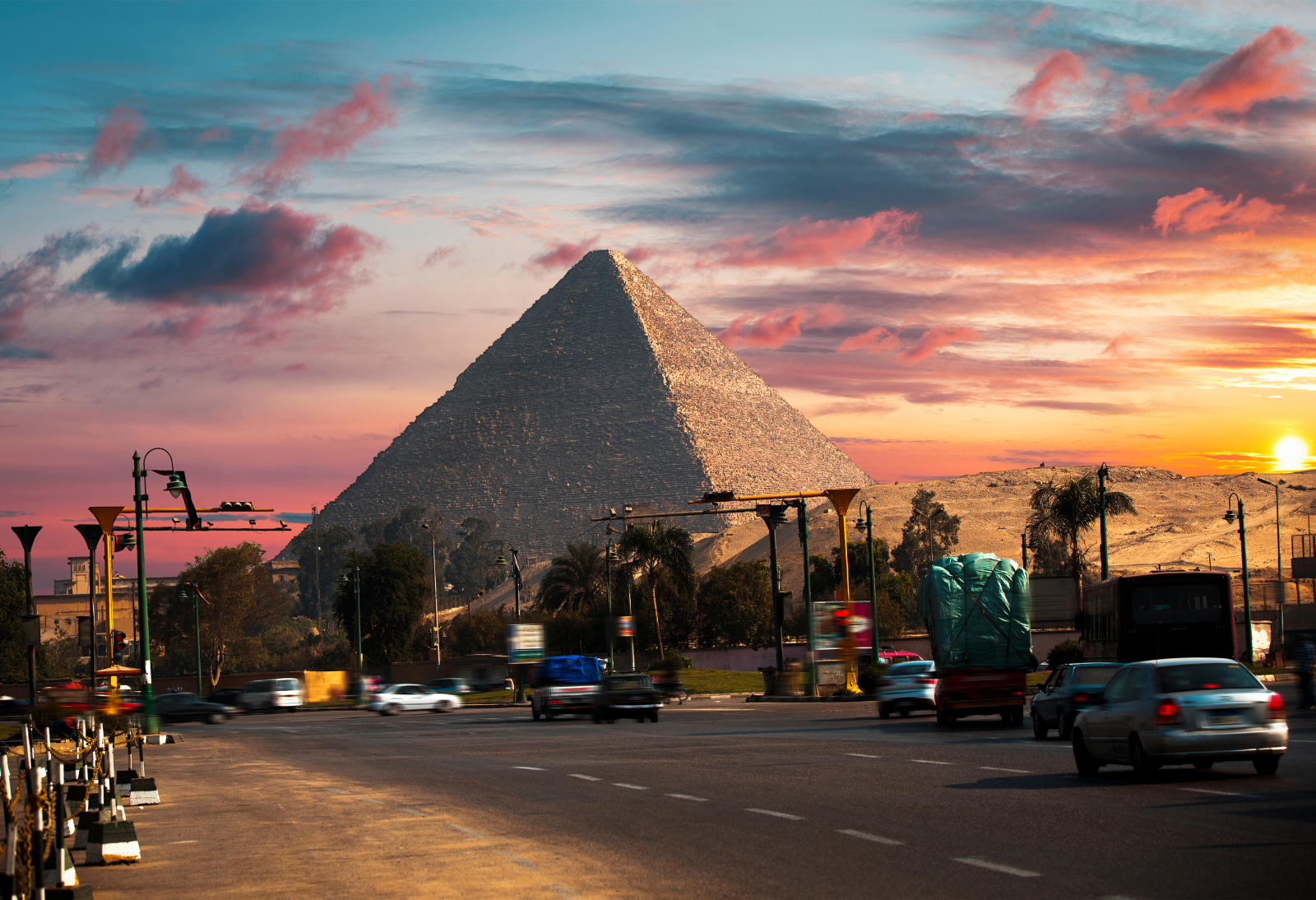
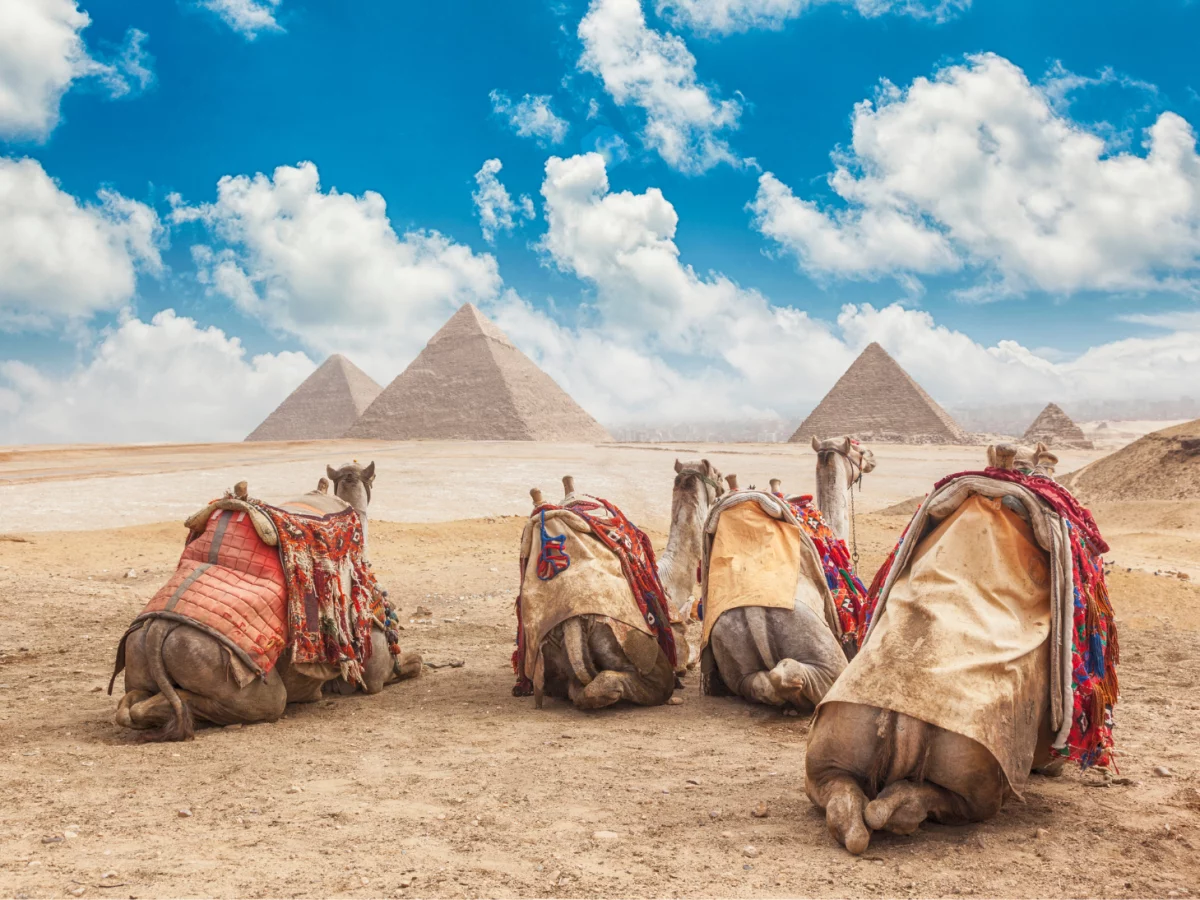
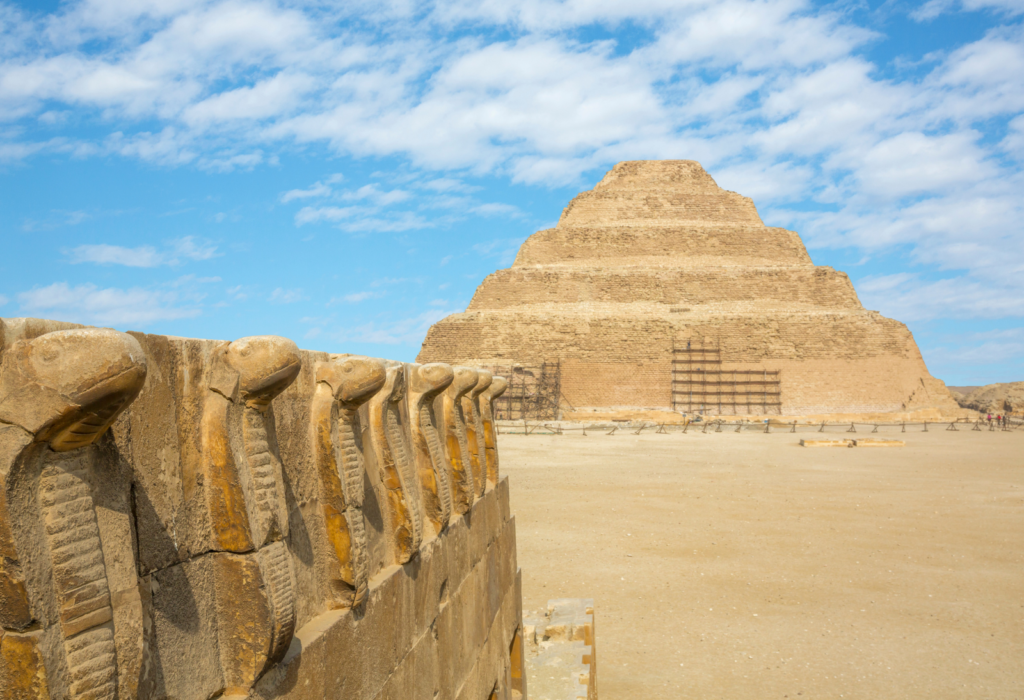
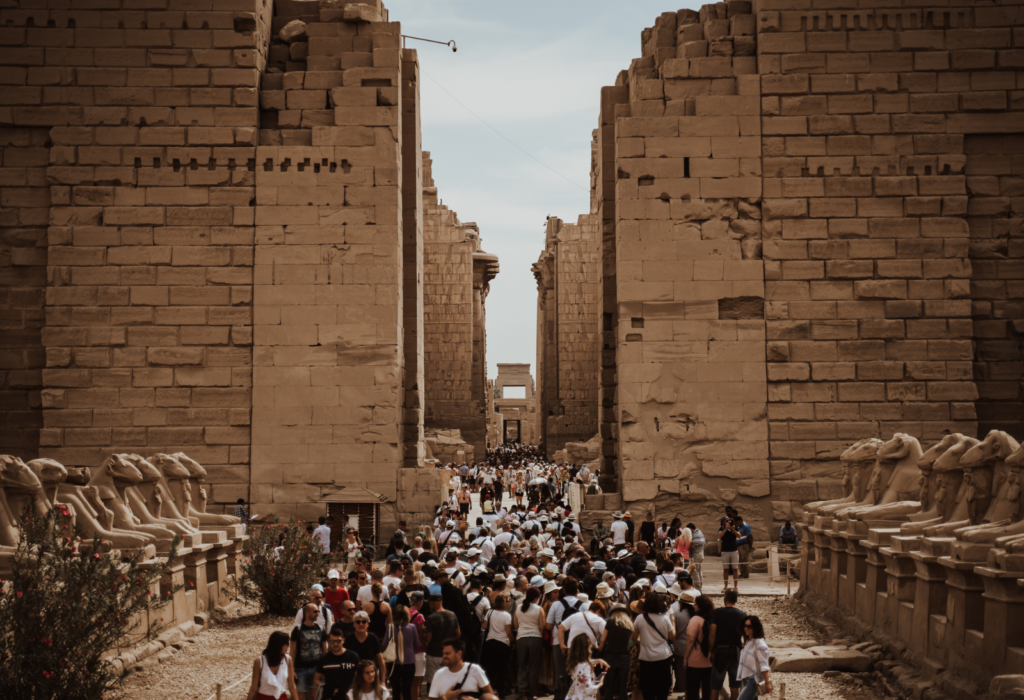

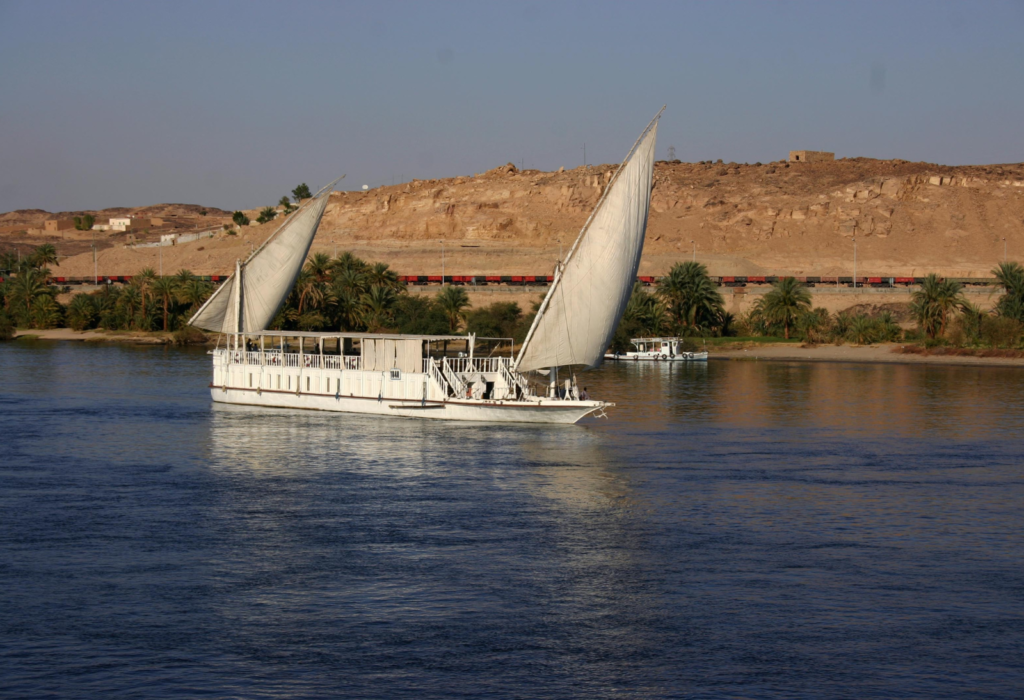
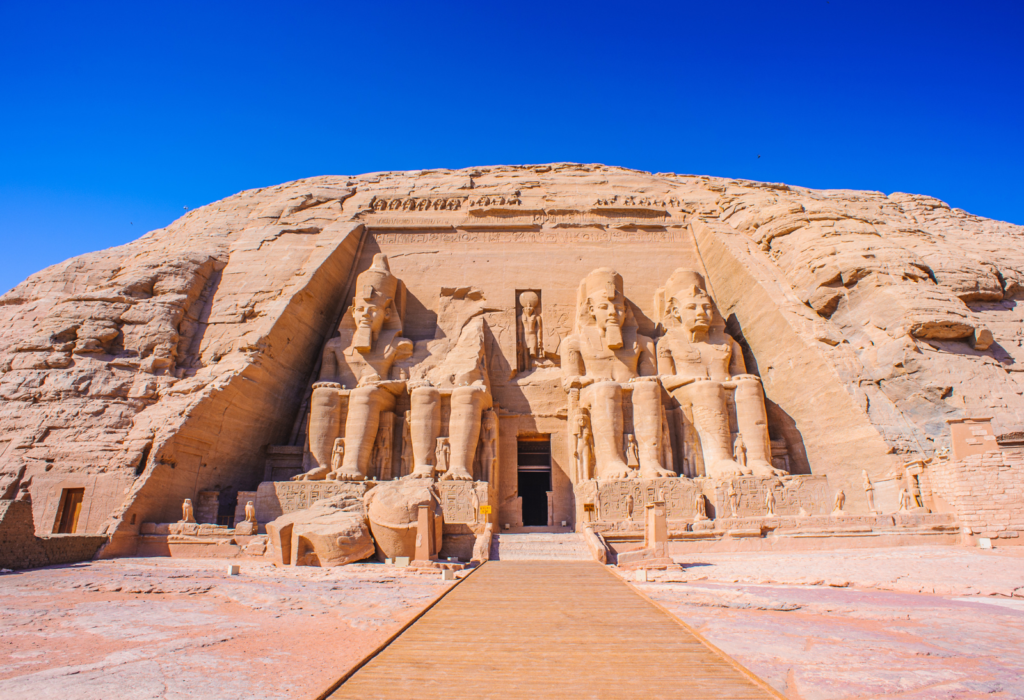
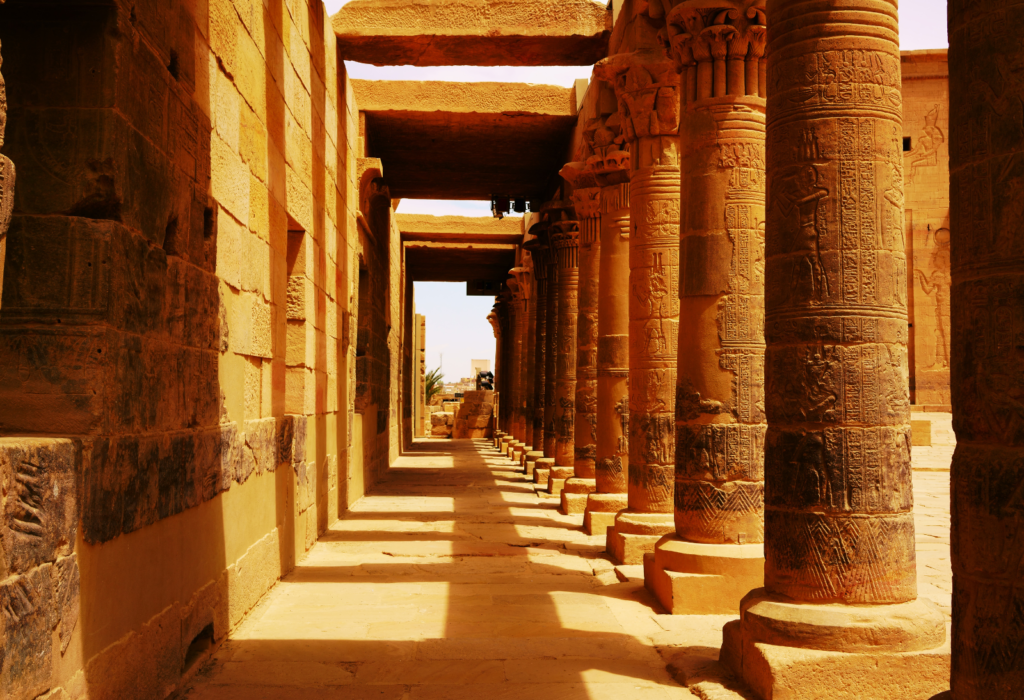







 by your friends at The Daily Navigator
by your friends at The Daily Navigator



